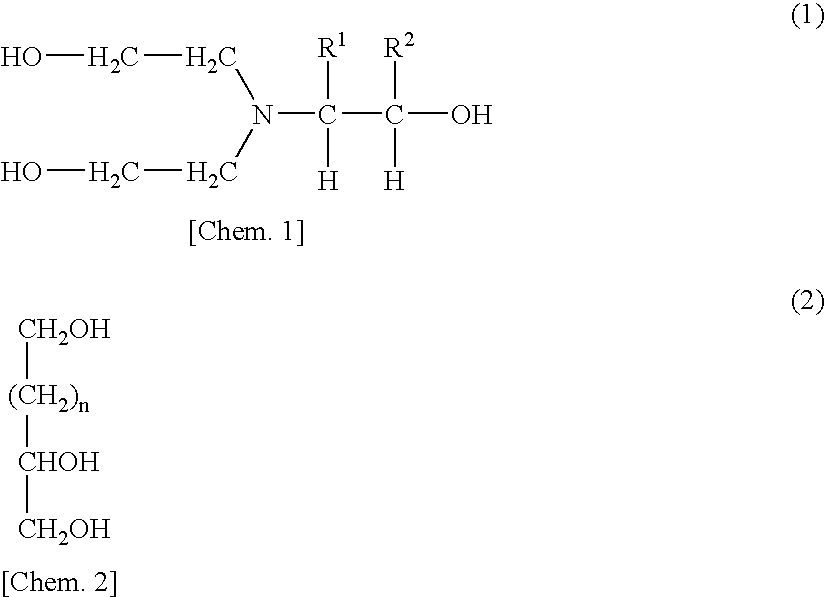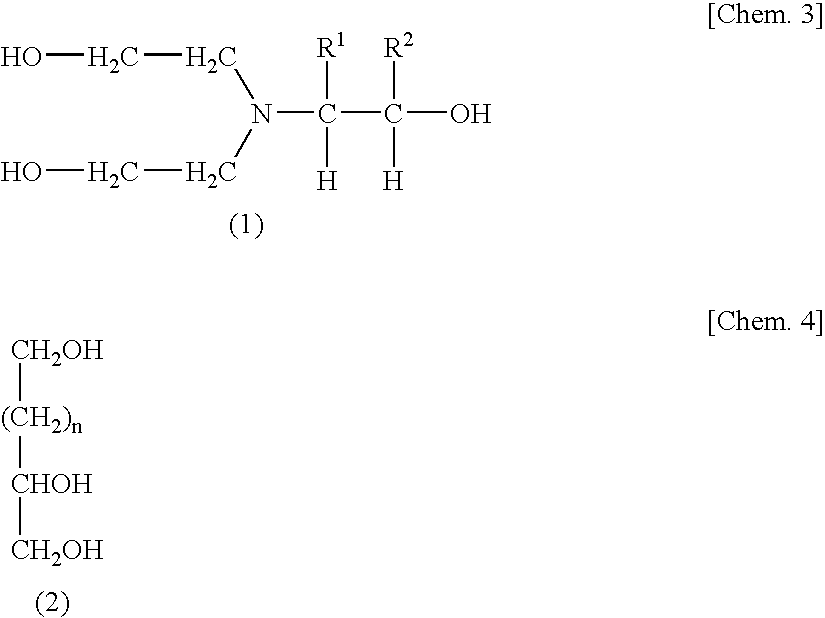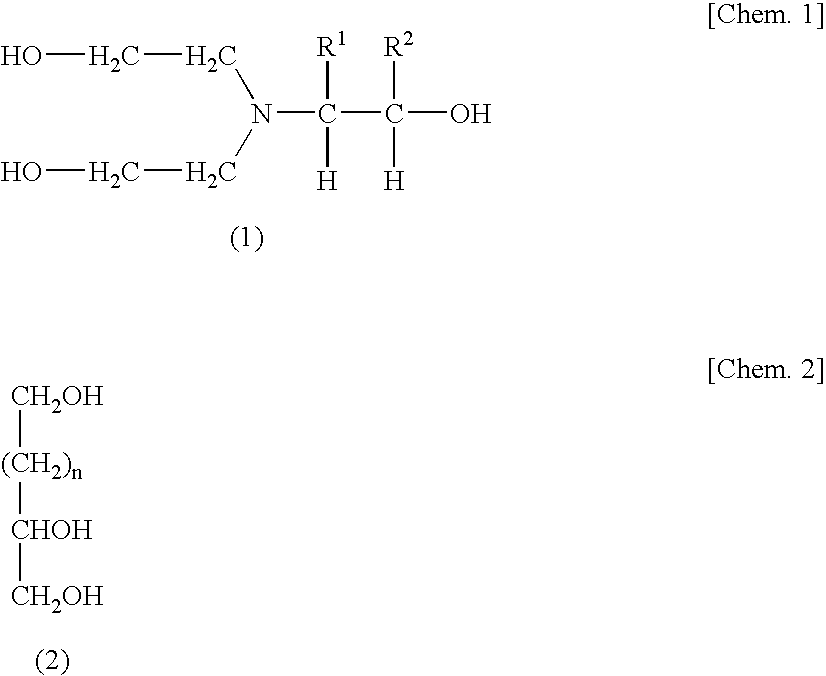Process for production of urethane resin and adhesive agent
a technology of urethane resin and adhesive agent, which is applied in the direction of adhesives, polyureas/polyurethane adhesives, adhesive types, etc., can solve the problems of insufficient removal, adhesive deposit on the adherend, and odor and skin irritation of acrylic pressure-sensitive adhesives, so as to achieve easy control of chain extension reaction
- Summary
- Abstract
- Description
- Claims
- Application Information
AI Technical Summary
Benefits of technology
Problems solved by technology
Method used
Image
Examples
example 1
Production of Urethane-Resin-Based Pressure-Sensitive Adhesive
[0108]Into a four-necked flask equipped with a stirrer, reflux condenser, nitrogen introduction tube, thermometer, and dropping funnel were introduced 177 g of polyol (P1), 23 g of 2,4-TDI (manufactured by Nippon Polyurethane Co., Ltd.; trade name Coronate T-100), and DBTDL as a urethane formation catalyst, the DBTDL being introduced in an amount corresponding to 25 ppm of the sum of the three components consisting of the polyol (P1), 2,4-tolylene diisocyanate, and glycerol (hereinafter abbreviated to GN). Subsequently, the mixture was gradually heated to 100° C., and a prepolymer formation reaction was conducted for 4 hours to obtain an isocyanate-group-terminated prepolymer. Thereafter, the resultant mixture was cooled to 60° C., and 115.3 g of ethyl acetate and 115.3 g of MEK were added thereto. Furthermore, 3.8 g of GN was added thereto as a chain extender and reacted. The reaction mixture was continuously reacted at ...
example 2
[0111]The same procedure as in Example 1 was conducted, except that the amounts of polyol (P1), 2,4-TDI, MEK, and ethyl acetate were changed as shown in Table 1 and that no urethane formation catalyst was used and 9.79 g of a compound obtained by the following production process (M1; adduct of diethanolamine with 1 mol of propylene oxide (DEA-PO)) was used as a chain extender. Thus, a polyurethane solution B was obtained. Furthermore, 1.5 g of Coronate L was added to 100 g of the polyurethane solution B obtained. Thus, a urethane-resin-based pressure-sensitive adhesive Bp was obtained.
[0112]Into a reaction vessel which was a high-pressure autoclave having a capacity of 5 L was introduced 1,050 g (10 mol) of diethanolamine. The contents were heated to 110° C. in a nitrogen stream. Subsequently, 580 g (10 mol) of propylene oxide was introduced into the reaction vessel over 1 hour, and the mixture was further reacted at 110° C. for 2 hours. That no propylene oxide remained in the react...
examples 3 to 8
[0113]Polyurethane solutions C to H were obtained under the same conditions as in Example 1, except for employing the formulation shown in Table 1. To each polyurethane solution was added the crosslinker (second polyisocyanate compound) shown in Table 1. Thus, urethane-resin-based pressure-sensitive adhesives Cp to Hp were obtained. In Examples 3 to 6 and 8, use was made of compound (M1), which was a diethanolamine adduct with 1 mol of PO, as a chain extender. In Example 7, glycerol was used as in Example 1.
TABLE 1Example12345678Polyol (g)Polyol (P1)177221.2710.3257.2Polyol (P2)150.1150.1199.71318.9Isocyanate (g)IPDI42.8431.1HDI89.7549.949.950.3TDI2328.8Catalyst amount in252525prepolymer reaction(ppm)Chain extender (g)Glycerol3.89.5M1 (DEA-PO)9.7929.413.213.211.4101M2 (MXDA-PO)M3 (N2HEEDA)Acrylic chainextenderTerminator (g)MIPA0.70.64.05AMPSolvent (g)Methyl ethyl115.3130.2449.3106.6106.6108.6148.1ketoneEthyl acetate115.3130.2449.3106.6106.6108.6148.11018.9Toluene1018.9Solid content4...
PUM
| Property | Measurement | Unit |
|---|---|---|
| temperature | aaaaa | aaaaa |
| temperature | aaaaa | aaaaa |
| temperature | aaaaa | aaaaa |
Abstract
Description
Claims
Application Information
 Login to View More
Login to View More - R&D
- Intellectual Property
- Life Sciences
- Materials
- Tech Scout
- Unparalleled Data Quality
- Higher Quality Content
- 60% Fewer Hallucinations
Browse by: Latest US Patents, China's latest patents, Technical Efficacy Thesaurus, Application Domain, Technology Topic, Popular Technical Reports.
© 2025 PatSnap. All rights reserved.Legal|Privacy policy|Modern Slavery Act Transparency Statement|Sitemap|About US| Contact US: help@patsnap.com



